
Piura: The Sunny Gem of Northern Peru
Discover Piura, Peru's sun-soaked city known for its colonial charm, stunning beaches, and delectable cuisine, making it an ideal destination for travelers seeking warmth and culture.
Welcome to Piura, a vibrant city in northern Peru known for its sunny weather, rich culture, and warm hospitality. Piura is often called the 'City of Eternal Heat' due to its consistently warm climate, making it a perfect destination for those looking to escape colder temperatures. Piura's historical roots run deep, with its founding dating back to 1532 by Spanish conquistador Francisco Pizarro. This city boasts a fascinating blend of colonial architecture and modern amenities. Wander through the charming streets of the historic center, where you can admire the Cathedral of Piura, a beautiful example of Spanish colonial architecture. For those who love the outdoors, Piura offers stunning natural landscapes. The nearby beaches of Mancora and Colan are famous for their golden sands and clear waters, perfect for sunbathing, swimming, and surfing. Additionally, the Sechura Desert provides a unique opportunity for adventurous travelers to explore one of Peru's largest deserts. Piura is also a gastronomic delight. The city's cuisine is influenced by its coastal location, offering fresh seafood dishes like ceviche and sudado. Don't miss out on trying the local specialty, Seco de Chavelo, a hearty stew made from dried beef, spices, and cassava. Whether you're drawn by the history, the beaches, or the food, Piura is a destination that promises to captivate and charm every visitor.
Local tips in Piura
- Best time to visit Piura is between May and October when the weather is warm and dry.
- Bring sunscreen and a hat, as the sun can be very strong.
- Try the local ceviche, a must-have dish in Piura.
- Visit the artisanal markets for unique souvenirs and handmade crafts.
- If you plan to visit the beaches, consider staying in Mancora for a more relaxed vibe.
Piura: The Sunny Gem of Northern Peru
Welcome to Piura, a vibrant city in northern Peru known for its sunny weather, rich culture, and warm hospitality. Piura is often called the 'City of Eternal Heat' due to its consistently warm climate, making it a perfect destination for those looking to escape colder temperatures. Piura's historical roots run deep, with its founding dating back to 1532 by Spanish conquistador Francisco Pizarro. This city boasts a fascinating blend of colonial architecture and modern amenities. Wander through the charming streets of the historic center, where you can admire the Cathedral of Piura, a beautiful example of Spanish colonial architecture. For those who love the outdoors, Piura offers stunning natural landscapes. The nearby beaches of Mancora and Colan are famous for their golden sands and clear waters, perfect for sunbathing, swimming, and surfing. Additionally, the Sechura Desert provides a unique opportunity for adventurous travelers to explore one of Peru's largest deserts. Piura is also a gastronomic delight. The city's cuisine is influenced by its coastal location, offering fresh seafood dishes like ceviche and sudado. Don't miss out on trying the local specialty, Seco de Chavelo, a hearty stew made from dried beef, spices, and cassava. Whether you're drawn by the history, the beaches, or the food, Piura is a destination that promises to captivate and charm every visitor.
When is the best time to go to Piura?
Iconic landmarks you can’t miss
Plaza de Armas de Piura
Experience the vibrant culture and historical charm of Plaza de Armas de Piura, the city's lively heart filled with gardens, eateries, and local traditions.
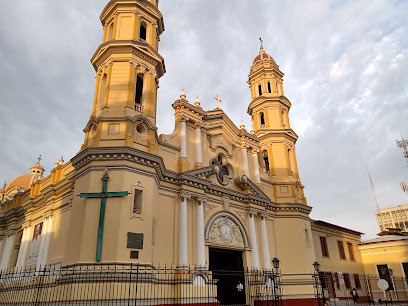
Plaza de Armas de Catacaos
Discover the vibrant heart of Catacaos at Plaza de Armas, where culture, history, and local life beautifully intertwine.
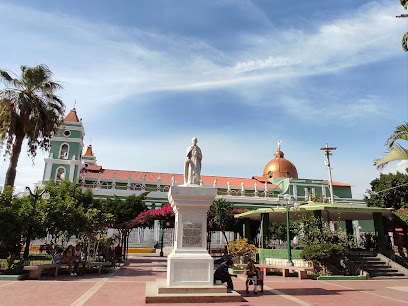
Plaza Tres Culturas
Discover the historical charm and natural beauty of Plaza Tres Culturas in Piura, where culture and tranquility meet in a lush urban park.
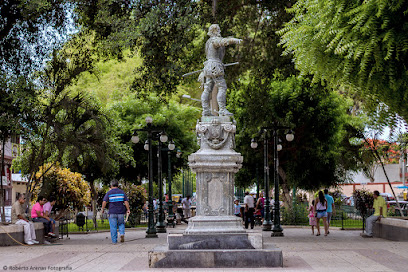
PLAYA COLÁN
Experience the breathtaking beauty of Playa Colán, a serene public beach in Peru, perfect for relaxation and adventure under the sun.
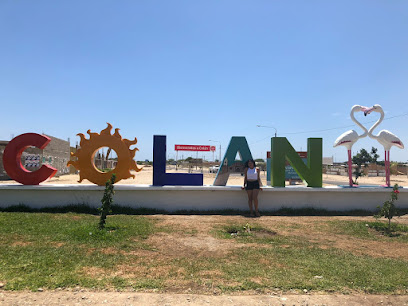
Kurt Beer Ecological Park
Explore the beauty and tranquility of Kurt Beer Ecological Park, a natural haven in Piura, perfect for relaxation and adventure.
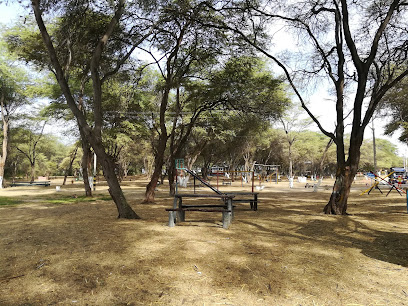
Iglesia de San Lucas
Explore the breathtaking architecture and rich history of the Iglesia de San Lucas, a must-see spiritual landmark in Colán, Peru.
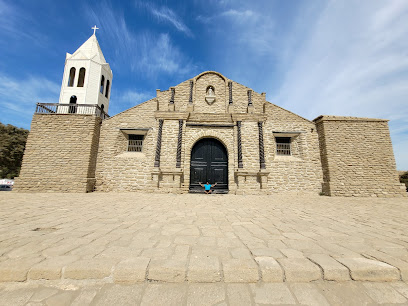
Casa Museo Gran Almirante Grau
Discover the legacy of Admiral Miguel Grau at Casa Museo Gran Almirante Grau, a captivating museum in Piura showcasing Peru's rich maritime history.

Médano Blanco - Sechura
Discover the stunning sand dunes of Médano Blanco in Sechura, Peru, where adventure meets breathtaking natural beauty.

San Juan Bautista Church
Explore the enchanting San Juan Bautista Church in Catacaos, Peru, a captivating blend of history, culture, and spiritual beauty.
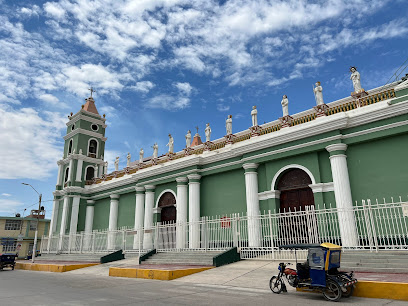
Museo de Sitio Narihuala
Explore the rich history of ancient Peru at Museo de Sitio Narihuala, a captivating museum showcasing pre-Columbian artifacts and culture.
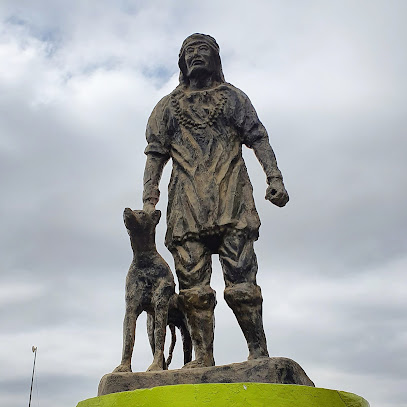
Piura Peru
Experience the rich cultural heritage and vibrant culinary scene of Piura, Peru, a captivating city filled with history and charm.
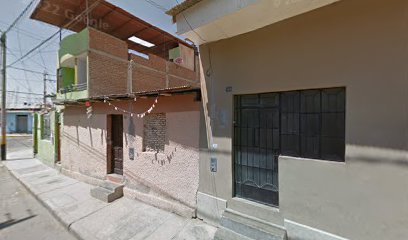
Bienvenidos a Piura la Vieja
Explore the ancient ruins and rich culture of Bienvenidos a Piura la Vieja, a captivating historical landmark in Peru that unveils the region's fascinating heritage.
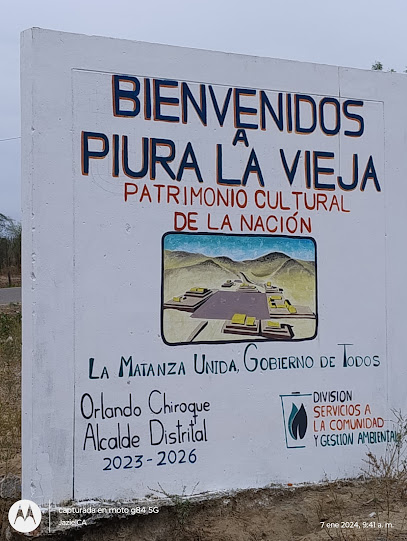
Mural piurano
Explore Mural Piurano in Piura, Peru – a vibrant historical landmark showcasing the region's rich culture and artistic heritage.
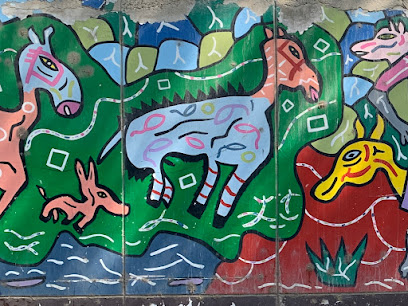
LUGAR DE SIMULACRO JESHUA OL
Discover the rich history and cultural significance of LUGAR DE SIMULACRO JESHUA OL, a captivating landmark in Piura that tells a story of tradition and heritage.

PIURA - PERU
Discover the rich history and vibrant culture of Piura, Peru, a city known for its culinary delights and stunning landscapes.
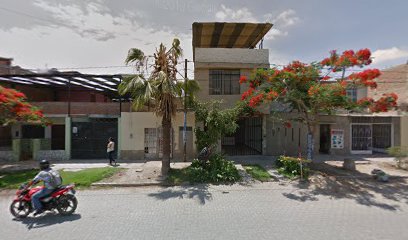
Unmissable attractions to see
St. Michael the Archangel Cathedral, Piura
Explore the stunning St. Michael the Archangel Cathedral in Piura, a captivating blend of Spanish colonial architecture and vibrant cultural heritage.
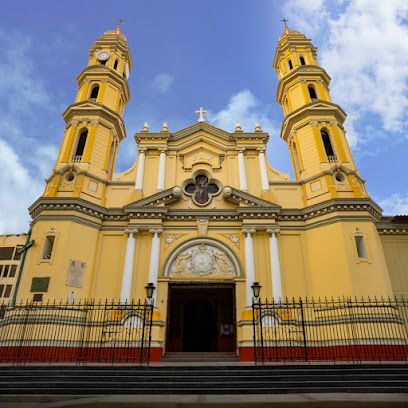
Plaza Tres Culturas
Explore the rich cultural heritage and natural beauty of Plaza Tres Culturas, a must-visit park in Piura, Peru.
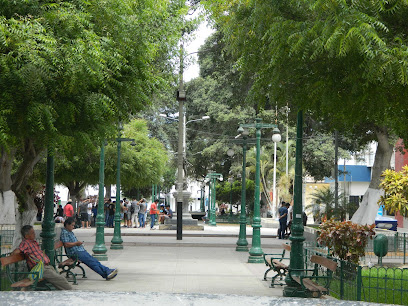
PLAYA COLÁN
Experience the tranquil beauty and vibrant culture of Playa Colán, a stunning public beach in Peru perfect for relaxation and adventure.
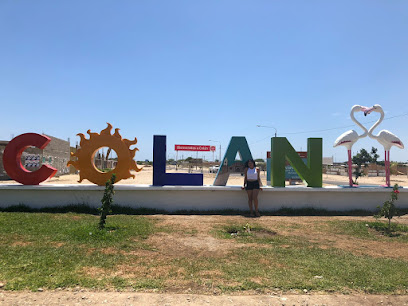
Narihualá
Uncover the ancient mysteries of Narihualá, an archaeological site in Catacaos, Peru, showcasing remarkable ruins and rich cultural heritage.
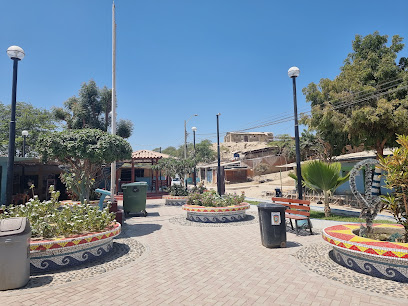
Municipal Museum Vicús
Discover the ancient artistry and history of the Vicús culture at the Municipal Museum Vicús, a must-visit gem in Piura, Peru.
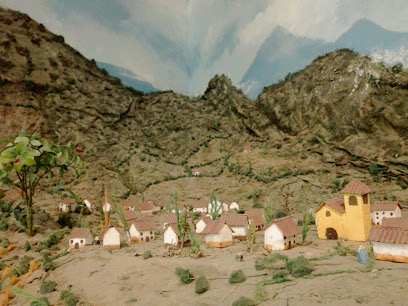
Casa Museo Gran Almirante Grau
Explore the rich maritime history of Peru at Casa Museo Gran Almirante Grau, a tribute to Admiral Miguel Grau and a must-see in Piura.
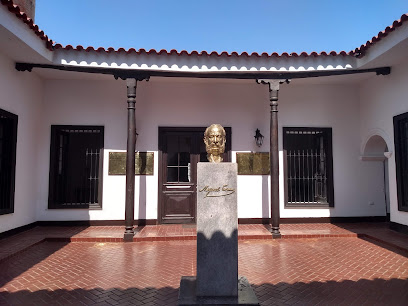
Médano Blanco - Sechura
Explore Médano Blanco in Sechura: A stunning destination for sandboarding and cultural immersion amidst breathtaking dunes.
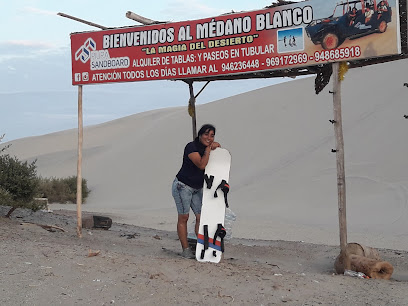
Museo de Sitio Narihuala
Explore the ancient treasures of Peru at Museo de Sitio Narihuala, a captivating museum located in the heart of Catacaos.
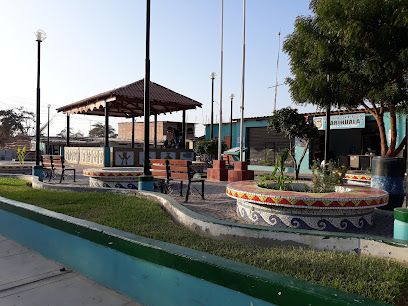
piura
Explore Piura, Peru: A vibrant city with rich history, mouthwatering cuisine, and stunning landscapes waiting to be discovered.

Essential places to dine
El Chalán
Experience authentic Peruvian cuisine at El Chalán in Piura – a must-visit culinary destination showcasing rich flavors and warm hospitality.
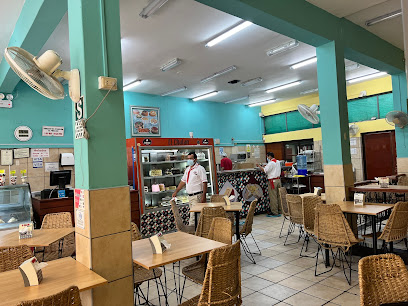
Cevichería Pedrito
Discover authentic Peruvian cuisine at Cevichería Pedrito - home of fresh ceviche and delightful seafood dishes in Piura.
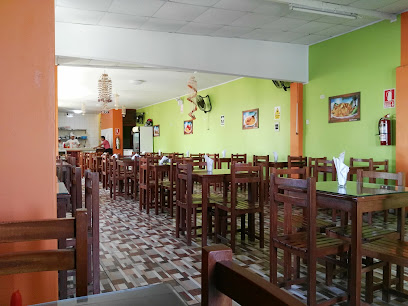
L'Ancora Grill & Lounge
Discover the vibrant fusion of flavors and nightlife at L'Ancora Grill & Lounge in Piura – where every meal becomes a celebration.
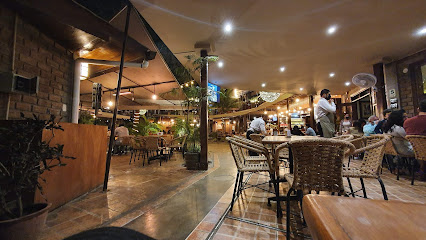
La Tomasita
Discover the heart of Peruvian cuisine at La Tomasita in Piura - a must-visit Creole restaurant for every food lover.

Las Dos Jarras
Discover the rich flavors of Peru at Las Dos Jarras, where traditional cuisine meets vibrant ambiance in the heart of Piura.
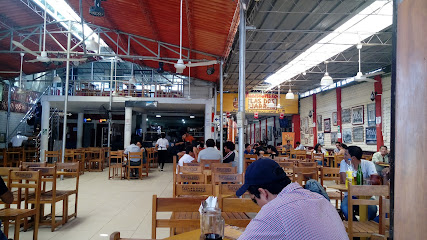
Restaurante Lomos Y Costillas - Piura
Experience authentic Peruvian cuisine at Restaurante Lomos Y Costillas in Piura, famous for its grilled meats and vibrant atmosphere.
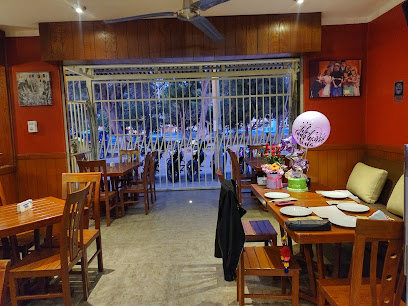
¨El Rocoto¨
Discover the authentic flavors of Peru at El Rocoto in Piura – where every dish tells a story.
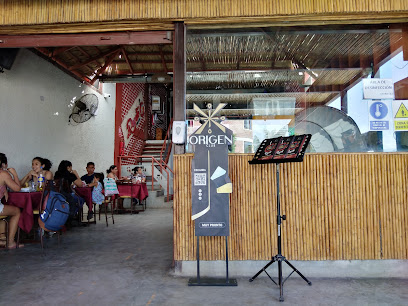
El Maná, Carnes y Parrilladas, Cevichería
Discover El Maná in Piura: A culinary haven for lovers of Peruvian meats and fresh ceviches in a welcoming atmosphere.
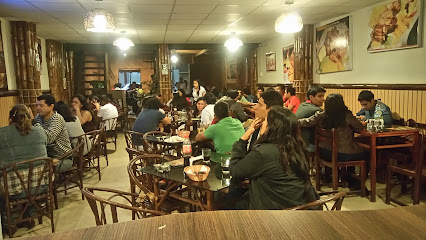
El Caracol Azul
Discover authentic Peruvian flavors at El Caracol Azul in Piura—where every meal tells a story.

Don Parce Restaurant
Experience authentic Peruvian cuisine at Don Parce Restaurant in Piura—where every dish tells a story of flavor and tradition.
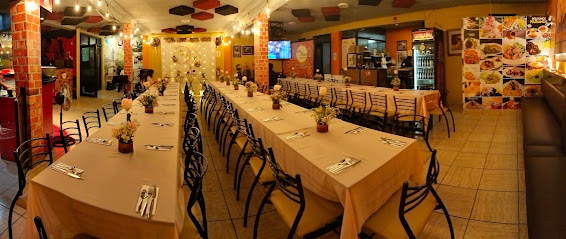
Restaurant Peña Show Señor Perú
Discover the vibrant atmosphere of Restaurant Peña Show Señor Perú – where delicious Creole cuisine meets lively disco nights in Piura.
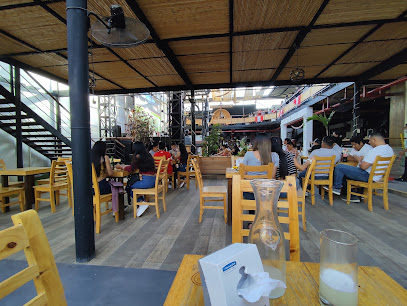
Eduardo El Brujo
Experience authentic Peruvian flavors at Eduardo El Brujo in Piura - where every dish tells a story of tradition and taste.
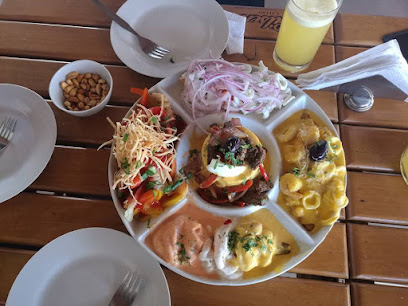
Tayanti Restaurante
Discover Tayanti Restaurante in Piura - where authentic Peruvian flavors meet inviting ambiance for an unforgettable dining experience.
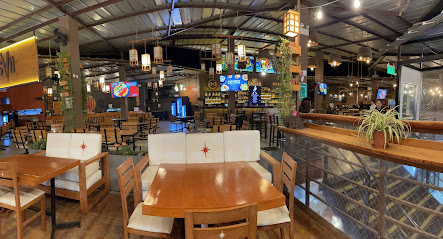
La Santitos Restaurante Piura
Experience the rich flavors of Peru at La Santitos Restaurante in Piura – a delightful culinary destination offering traditional dishes in a warm setting.

Restaurant Teresita
Experience authentic Peruvian cuisine at Restaurant Teresita in Piura - where tradition meets flavor in every dish.
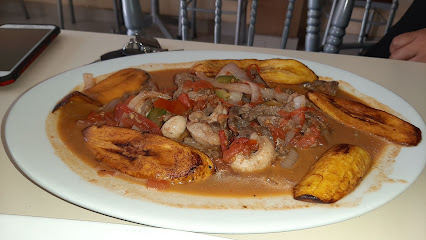
Markets, malls and hidden boutiques
Real Plaza Piura
Explore Real Plaza Piura, where shopping meets entertainment in a vibrant Peruvian setting for an unforgettable experience.
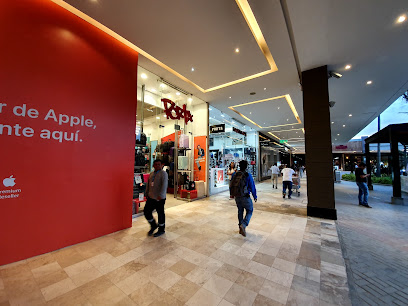
Open Plaza Piura
Explore the lively Open Plaza Piura for an unforgettable shopping and dining experience in the heart of Peru.
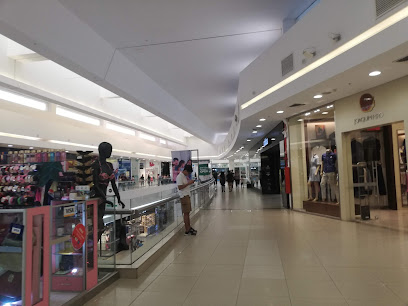
With Love Piura
Discover the heart of Piura at With Love Piura, a gift shop offering unique local handicrafts and souvenirs that capture the essence of Peruvian culture.
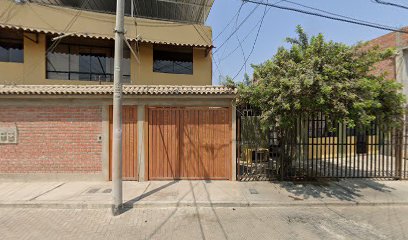
Ositos sweet Love Piura
Discover unique Peruvian crafts at Ositos Sweet Love in Piura's Mercado Modelo, where local artistry meets unforgettable souvenirs.

Imaginate Piura
Discover unique personalized gifts at Imaginate Piura, a charming shop in the heart of Piura offering locally crafted treasures.
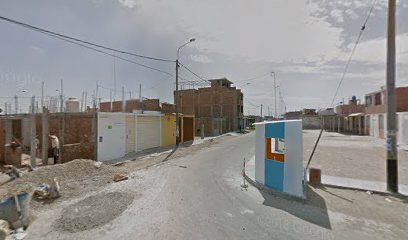
KMS-Store
Discover the charm of local craftsmanship at KMS-Store, Piura's premier gift shop for unique souvenirs and handmade treasures.
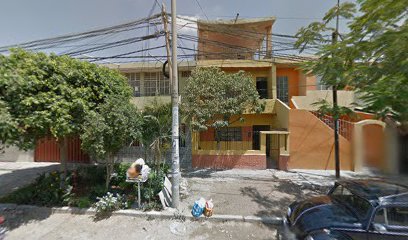
Ophelie el arte de crear
Explore unique handcrafted gifts at Ophelie el arte de crear in Piura, Peru, where local artistry meets authentic Peruvian culture.
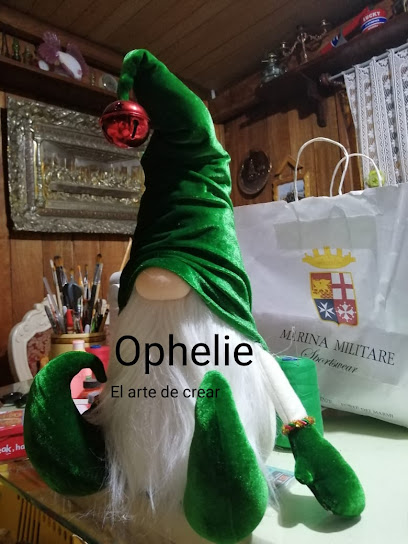
Expressando Amor
Explore the charm of Piura at Expressando Amor, your ultimate gift shop for unique souvenirs and local treasures.

Recuerdos eternos
Discover unique souvenirs and local handicrafts at Recuerdos Eternos, Piura's charming gift shop celebrating Peruvian culture and craftsmanship.
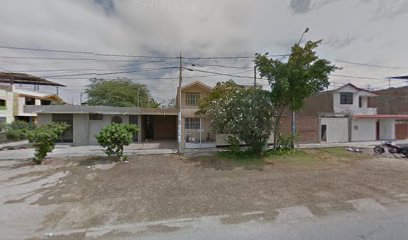
DETALLESROSEND
Explore DETALLESROSEND, a charming gift shop in Piura offering unique handcrafted treasures and authentic Peruvian souvenirs.
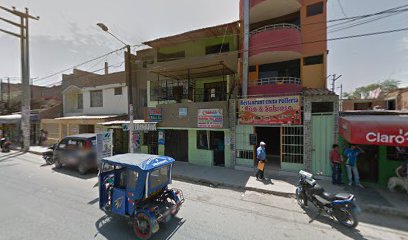
Boutique Mar y cielo
Discover unique Peruvian fashion at Boutique Mar y cielo, where contemporary style meets traditional craftsmanship in the heart of Piura.
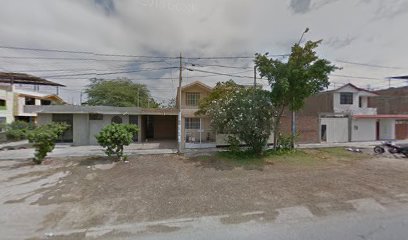
Bella´s store
Explore Bella's Store in Piura for an exceptional women's fashion experience, blending contemporary styles with traditional Peruvian flair.

KALU shop
Explore KALU shop in Piura for a vibrant selection of women's fashion that combines style, quality, and local flair.

Team Tigers
Explore Team Tigers Boutique in Piura for unique fashion and handcrafted treasures that capture the essence of Peruvian culture.
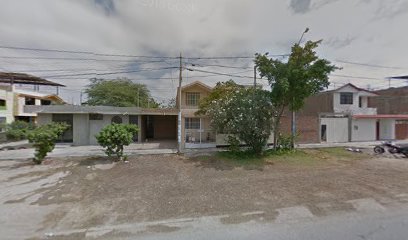
Osly Novedades y postres
Explore the delightful artisanal treats and unique gifts at Osly Novedades y Postres in Piura, where local culture comes to life.
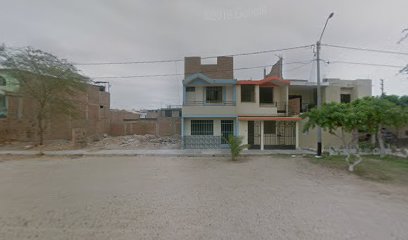
Essential bars & hidden hideouts
Beef House
Experience the vibrant grill scene at Beef House in Piura, where delicious meats collide with thrilling sports entertainment for an unforgettable dining experience.
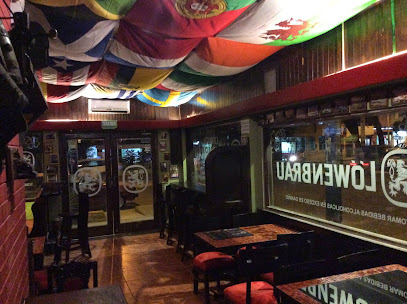
Aruma Bar & Disco
Experience the vibrant nightlife at Aruma Bar & Disco in Piura, where every night is a celebration of music, dance, and exquisite cocktails.
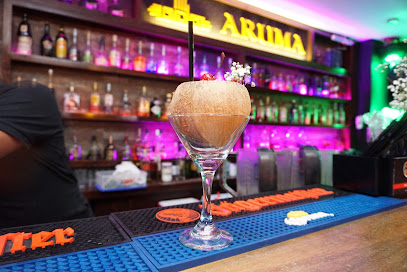
Makala Bar
Experience the vibrant nightlife of Piura at Makala Bar, where delicious cocktails and local drinks await in a lively atmosphere.
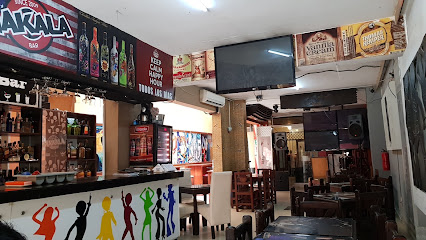
Kanta Bar & Karaoke
Experience the ultimate karaoke night in Piura at Kanta Bar & Karaoke, where music and fun come together in an unforgettable atmosphere.
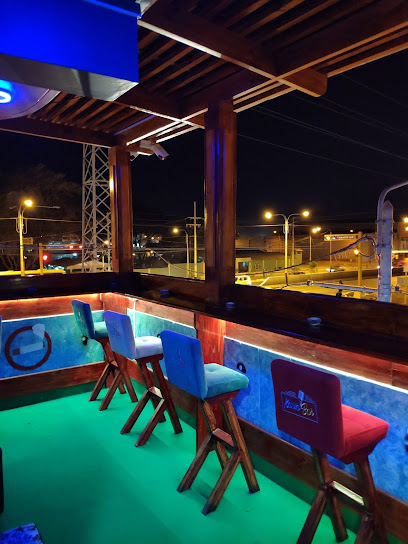
Residence Lounge Bar
Discover the vibrant atmosphere and exquisite cuisine of Residence Lounge Bar, a top-rated gastropub in the heart of Piura, Peru.
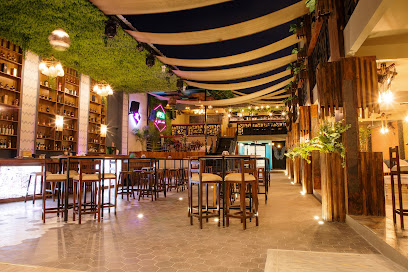
Marqués Bar
Experience the lively ambiance and delightful drinks at Marqués Bar, a vibrant hotspot in Piura, Peru, perfect for an unforgettable night out.
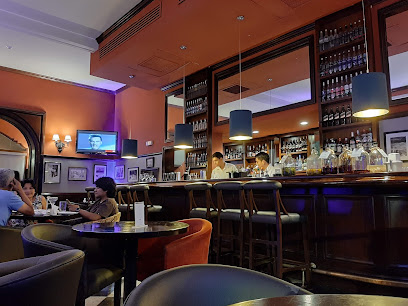
La Rivera Lounge
Discover the vibrant flavors of Piura at La Rivera Lounge, where local ingredients and international cuisine come together in a lively atmosphere.
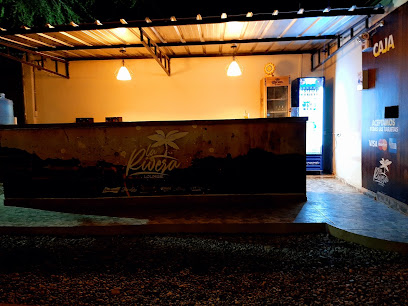
Poción bar y café
Experience the vibrant flavors of Piura at Poción Bar y Café, where grilled delicacies and refreshing drinks create an unforgettable dining adventure.
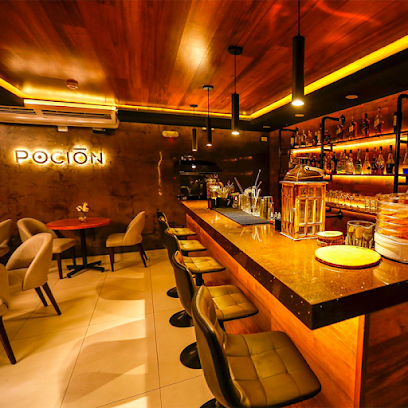
restobar tantay
Experience the vibrant flavors of Peru at Restobar Tantay, a culinary oasis in the heart of Piura, perfect for food lovers and tourists alike.
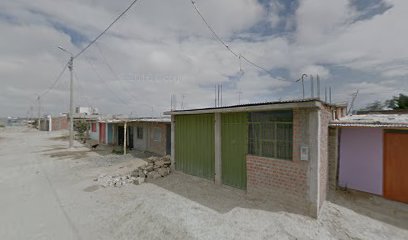
THE BOHEMY KARAOKE RESTO-BAR
Discover vibrant nightlife and karaoke fun at The Bohemy Karaoke Resto-Bar in Piura - where every night is a musical adventure.
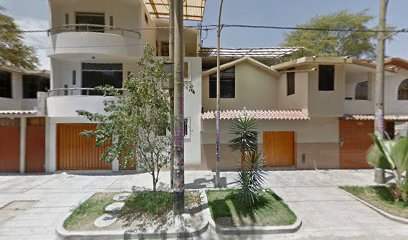
Terraza Momentos
Discover the lively spirit of Piura at Terraza Momentos, where local culture and vibrant nightlife come together in a cozy pub atmosphere.

Bal Lounge Bar
Experience the fusion of local flavors and contemporary cuisine at Bal Lounge Bar, the top gastropub in Piura.
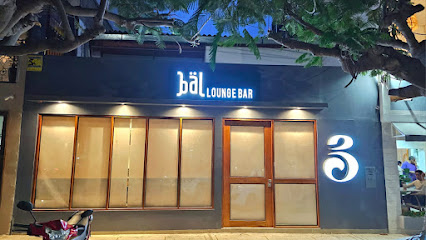
Maná Lounge Bar
Discover the vibrant nightlife of Piura at Maná Lounge Bar, a perfect blend of local charm and modern vibes.
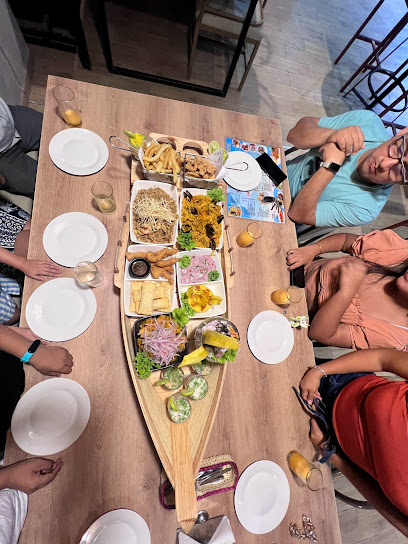
Beer Garden 80's
Discover the lively atmosphere and delicious cuisine at Beer Garden 80's, a charming gastropub in Piura that brings the 1980s back to life.
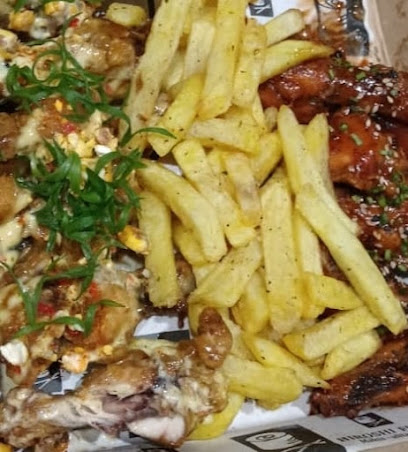
CEVICHELA Pub Restaurant
Experience the vibrant flavors of Peru at CEVICHELA Pub Restaurant, a top gastropub in Piura, known for its fresh ceviches and inviting ambiance.

Local Phrases
-
- HelloHola
[oh-lah] - GoodbyeAdiós
[ah-dee-ohs] - YesSí
[see] - NoNo
[noh] - Please/You're welcomePor favor/De nada
[por fah-vor/de nah-dah] - Thank youGracias
[grah-see-ahs] - Excuse me/SorryPerdón
[pair-dohn] - How are you?¿Cómo estás?
[koh-moh ehs-tahs] - Fine. And you?Bien. ¿Y tú?
[bee-ehn. ee too] - Do you speak English?¿Hablas inglés?
[ah-blahs een-glehs] - I don't understandNo entiendo
[noh ehn-tee-ehn-doh]
- HelloHola
-
- I'd like to see the menu, pleaseQuisiera ver el menú, por favor
[kee-see-eh-rah behr ehl meh-noo, por fah-vor] - I don't eat meatNo como carne
[noh koh-moh kahr-neh] - Cheers!¡Salud!
[sah-lood] - I would like to pay, pleaseQuisiera pagar, por favor
[kee-see-eh-rah pah-gahr, por fah-vor]
- I'd like to see the menu, pleaseQuisiera ver el menú, por favor
-
- Help!¡Ayuda!
[ah-yoo-dah] - Go away!¡Vete!
[veh-teh] - Call the Police!¡Llama a la policía!
[yah-mah ah lah poh-lee-see-ah] - Call a doctor!¡Llama a un doctor!
[yah-mah ah oon dohk-tohr] - I'm lostEstoy perdido
[ehs-toy pair-dee-doh] - I'm illEstoy enfermo
[ehs-toy ehn-fehr-moh]
- Help!¡Ayuda!
-
- I'd like to buy...Quisiera comprar...
[kee-see-eh-rah kohm-prahr...] - I'm just lookingSolo estoy mirando
[soh-loh ehs-toy mee-rahn-doh] - How much is it?¿Cuánto cuesta?
[kwan-toh kwes-tah] - That's too expensiveEso es muy caro
[eh-soh ehs mwee kah-roh] - Can you lower the price?¿Puedes bajar el precio?
[pweh-dehs bah-hahr ehl pree-see-oh]
- I'd like to buy...Quisiera comprar...
-
- What time is it?¿Qué hora es?
[keh oh-rah ehs] - It's one o'clockEs la una
[ehs lah oo-nah] - Half past (10)Media (10)
[meh-dee-ah (diez)] - MorningMañana
[mah-nyah-nah] - AfternoonTarde
[tahr-deh] - EveningNoche
[noh-cheh] - YesterdayAyer
[ah-yehr] - TodayHoy
[oy] - TomorrowMañana
[mah-nyah-nah] - 1Uno
[oo-noh] - 2Dos
[dohs] - 3Tres
[trehs] - 4Cuatro
[kwah-troh] - 5Cinco
[seen-koh] - 6Seis
[say-eess] - 7Siete
[see-eh-teh] - 8Ocho
[oh-choh] - 9Nueve
[nweh-veh] - 10Diez
[diez]
- What time is it?¿Qué hora es?
-
- Where's a/the...?¿Dónde está...?
[dohn-deh ehs-tah] - What's the address?¿Cuál es la dirección?
[kwal ehs lah dee-rehk-syon] - Can you show me (on the map)?¿Puedes mostrarme (en el mapa)?
[pweh-dehs mohs-trar-meh (ehn ehl mah-pah)] - When's the next (bus)?¿Cuándo es el próximo (autobús)?
[kwan-doh ehs ehl proh-ksee-moh (ow-toh-boos)] - A ticket (to ....)Un boleto (a ....)
[oon boh-leh-toh (ah ....)]
- Where's a/the...?¿Dónde está...?
History of Piura
-
Piura, one of the oldest Spanish cities in South America, was founded by Francisco Pizarro on August 15, 1532. Originally named San Miguel de Piura, it served as an important base for the Spanish conquest of the Inca Empire. The city was strategically located near the coast, facilitating communication and transportation between the Spanish territories.
-
Before the arrival of the Spanish, the Piura region was inhabited by various indigenous cultures, including the Tallán, Vicús, and Sechura peoples. These groups were skilled in agriculture, pottery, and metallurgy. The Vicús culture, in particular, is renowned for its intricate gold and copper artifacts, which have been discovered in archaeological sites throughout the region.
-
In 1829, Piura played a significant role in the Battle of the Portete de Tarqui during the Gran Colombia-Peru War. The conflict arose from territorial disputes between the newly independent nations of Gran Colombia (which included present-day Ecuador) and Peru. The battle resulted in a victory for Gran Colombia, but subsequent negotiations led to the signing of the Treaty of Guayaquil, which established the border between the two countries.
-
The town of Catacaos, located near Piura, is renowned for its rich artisan traditions. Since pre-Columbian times, Catacaos has been a center for skilled craftsmanship, producing high-quality pottery, textiles, and jewelry. The town's artisans continue to use traditional techniques passed down through generations, making it a must-visit destination for those interested in local culture and craftsmanship.
-
Piura's history is marked by the recurring El Niño phenomenon, a climatic event that brings heavy rains and flooding to the region. The most severe El Niño events occurred in 1983 and 1998, causing significant damage to infrastructure and agriculture. Despite the challenges, the people of Piura have shown remarkable resilience, rebuilding their communities and adapting to the changing climate.
-
During the War of the Pacific (1879-1884), Piura served as a strategic location for Peruvian forces. The conflict, which pitted Peru and Bolivia against Chile, resulted in significant territorial losses for Peru. Piura's strategic port and location made it a key logistical hub for military operations and supply routes during the war.
-
In recent decades, Piura has experienced significant economic growth, driven by agriculture and commerce. The region is a major producer of cotton, rice, and mangoes, contributing to Peru's agricultural exports. Additionally, Piura's coastal location has made it a popular destination for tourism, with visitors drawn to its beautiful beaches, vibrant culture, and historical landmarks.
Piura Essentials
-
Piura is accessible by air, road, and bus. The nearest airport is Capitán FAP Guillermo Concha Iberico International Airport, which has frequent flights from Lima and other major Peruvian cities. From Lima, the flight takes about 1.5 hours. Buses from Lima to Piura are also available, with several companies offering services. The bus journey can take around 16 to 18 hours. If you are driving, the Pan-American Highway connects Lima to Piura, offering a scenic but long drive.
-
Within Piura, transportation options include taxis, mototaxis (auto rickshaws), and buses. Taxis are widely available, but always use registered taxis or book through reputable apps. Mototaxis are a popular and inexpensive way to get around for short distances. Public buses are an option for traveling within the city and to nearby towns, though they can be crowded during peak hours. Renting a car is also possible, but be mindful of local driving habits and road conditions.
-
The official currency in Peru is the Peruvian Sol (PEN). Credit and debit cards are widely accepted in hotels, restaurants, and larger stores. It is advisable to carry some cash for smaller establishments, markets, and mototaxis. ATMs are readily available throughout Piura, and most international cards are accepted. Currency exchange services can be found at the airport, banks, and exchange offices.
-
Piura is generally safe for tourists, but it is important to take standard precautions. Avoid walking alone at night, especially in less populated areas. Neighborhoods such as Castilla and certain parts of the city center can have higher crime rates targeting tourists, so be particularly vigilant there. Keep your belongings secure and be cautious in crowded places like markets and bus stations. Use registered taxis or reputable ride-hailing apps for transportation.
-
In case of emergency, dial 105 for police assistance, 116 for the fire department, and 117 for medical emergencies. Piura has several hospitals and clinics where you can seek medical help. It is recommended to have travel insurance that covers medical emergencies. Pharmacies are available throughout the city for minor health issues and over-the-counter medications. The local Tourist Police can also assist with issues specifically related to tourists.
-
Fashion: Do dress comfortably and modestly, especially when visiting religious sites. Avoid wearing flashy jewelry. Religion: Do respect local customs and traditions. When visiting churches, dress conservatively and keep noise to a minimum. Public Transport: Do be respectful and offer seats to elderly passengers. Don't eat or drink on public transport. Greetings: Do greet people with a friendly 'Buenos días' (Good morning) or 'Buenas tardes' (Good afternoon). A handshake is common. Eating & Drinking: Do try local dishes like ceviche and seco de chabelo. Don't refuse food or drink offerings, as it may be considered impolite.
-
To experience Piura like a local, visit the central market to sample fresh produce and traditional dishes. Engage with locals; they are often friendly and happy to share stories about the area's history and culture. Don't miss the chance to visit nearby attractions like Catacaos, known for its crafts and jewelry, and the beautiful beaches of Máncora, just a few hours away. Enjoy a stroll through the Plaza de Armas and explore the local museums to learn more about Piura's rich history.
Trending Landmark in Piura
-
Plaza de Armas de Piura
-
Plaza de Armas de Catacaos
-
Plaza Tres Culturas
-
PLAYA COLÁN
-
Kurt Beer Ecological Park
-
Iglesia de San Lucas
-
Casa Museo Gran Almirante Grau
-
Médano Blanco - Sechura
-
San Juan Bautista Church
-
Museo de Sitio Narihuala
-
Piura Peru
-
Bienvenidos a Piura la Vieja
-
Mural piurano
-
LUGAR DE SIMULACRO JESHUA OL
-
PIURA - PERU
Nearby Cities to Piura
-
Things To Do in Chiclayo
-
Things To Do in Loja
-
Things To Do in Cuenca
-
Things To Do in Salinas
-
Things To Do in Guayaquil
-
Things To Do in Trujillo
-
Things To Do in Macas
-
Things To Do in Manta
-
Things To Do in Ambato
-
Things To Do in Tena
-
Things To Do in Huaraz
-
Things To Do in Quito
-
Things To Do in Mindo
-
Things To Do in Otavalo
-
Things To Do in Ibarra









